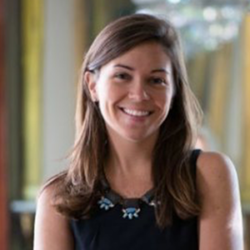As institutional collections begin and continue to develop, from time to time their contents need to be assessed through inventory and internal discussion. In many cases, the inevitable question finds its way into these important examinations: “why do we have this?” The process that ensues may bring up many challenges, but what is ultimately required is a sincerely professional perspective; which can be more difficult than one might think.
Depending on the age of an institution, a collecting focus can shift over time, directors and governing bodies may inject their personal preferences, curatorial strengths can cloud long-term decision making, and the weighing of an institution’s image against an institutional mission can make for a difficult understanding of answering the “why” and moving forward in an ethically-sound direction.
Once the “why” is answered, the next foreboding question is “how do we get rid of this?” Although the term “deaccession” has sometimes found disfavor, there is a reason the process exists as it can be a vital action for many collections. Taking on a deaccession project for any institution requires a great deal of forethought and planning, far beyond the identification of objects for dispersal.
In this webinar, we will address the multiple steps, and back-steps, of deaccessioning a diverse selection of objects from a collection using the experience of the 2014 to 2017 Cheekwood Permanent Collection deaccession initiative. Topics covered include assessing previous institutional deaccessions, board review and approval, collecting plan development, cross-reference of digital and hard files, institutional transfers, ethnographic materials and indigenous organizations, and donor relations.

Leslie B. Jones joined Cheekwood in 2015 and holds the position of Vice President, Museum Affairs and Curator of Decorative Arts at Cheekwood. Jones is responsible for overseeing the Museum department, exhibitions, and permanent collection. She also directs the Historic Initiative Restoration and Refurnishing initiative, which will result in a new, historically-interpreted series of rooms in the former Cheek family residence, reflecting the original 1930s aesthetic, lifestyle, and culture. Jones previously served as the Curator and Director of Historical Resources & Programming for the White House Historical Association in Washington, DC, where she was a lead member of the team that re-envisioned and re-designed the White House Visitor Center. She has a Master of Arts in the History of Decorative Arts from the Smithsonian and George Washington University Corcoran School of the Arts and Design, and a Master Certification in the Appraisal Studies of Fine and Decorative Arts from New York University.
Jones has provided independent advising services and exhibition development for a series of organizations, institutions, and individuals, including the White House Historical Association, National Trust for Historic Preservation, Washington Winter Antiques Show, and Goldman Sachs & Company.

![]()
The Legal Issues Webinar Series is a collaboration between Connecting to Collections Care and ARCS, the Association of Registrars and Collections Specialists.
Recorded: Wednesday, May 17, 2017
Duration: 1 Hour 27 minutes
Why do we need this? Power Point Slides
Trailing Questions: Why Do We Need This?






